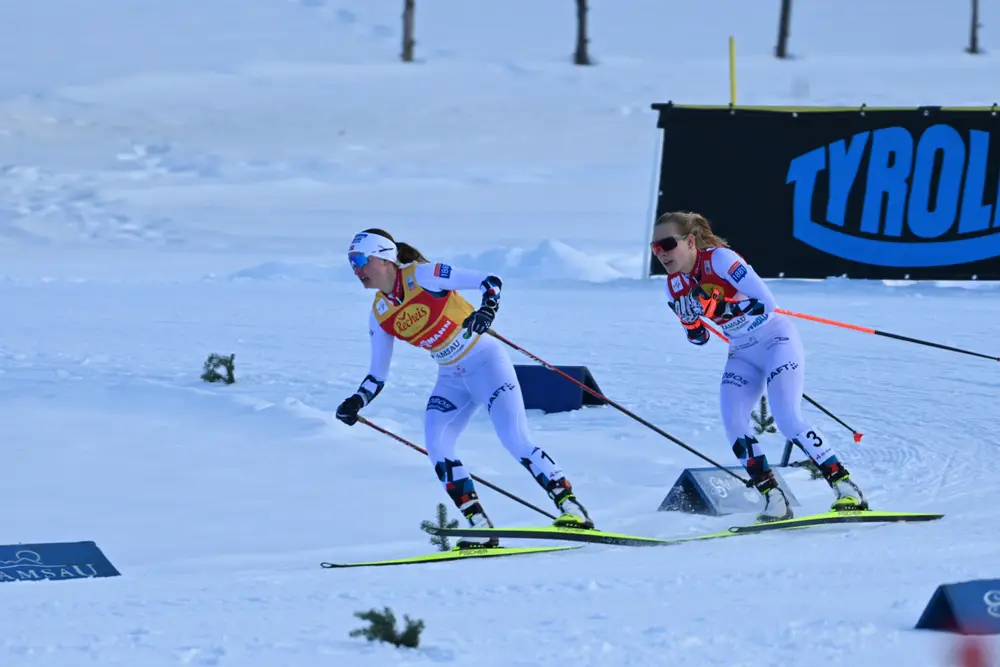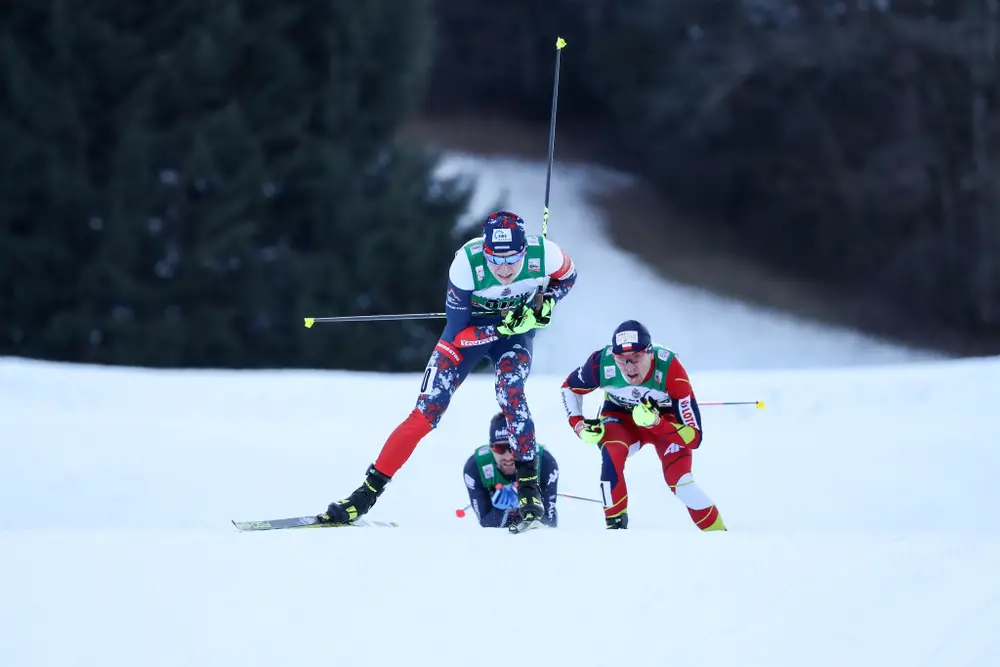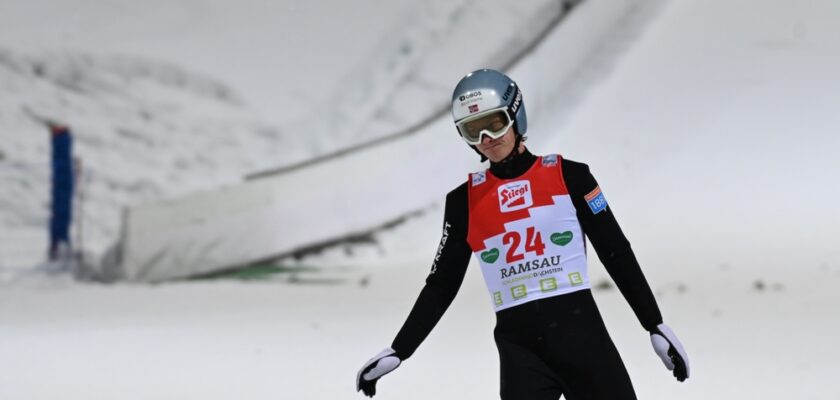Nordic combined is a winter sport that combines two disciplines: ski jumping and cross-country skiing.The activity was born in the Nordic countries and became a Winter Olympic event in 1924.
Although not as popular as other winter sports, such as ice hockey or alpine skiing, Nordic combined provides a unique challenge for athletes, as it requires both technical skill and physical endurance.
The rules of Nordic combined are therefore complex, as they involve two different activities. Understanding these rules is essential to appreciating the sport and understanding the athletes’ strategies.
In this article, then, we’ll go into detail about the main rules of Nordic combined. We’ll cover everything from the structure and size of the competition venue to infractions and penalties. Check it out!
Open your Betano account and get up to 1,000 reais in bonuses.
PIX payments, live games and super odds!
Click here to open your account!

Nordic Combined rules: complete list
- Venues;
- Duration;
- Score;
- Participants;
- Equipment;
- Ski jumping;
- Cross-country skiing;
- Infractions and penalties.
Nordic combined rules: venues
The Nordic combined is held at two different venues: the ski jump ramp and the cross-country ski course.
The ski jump ramp must meet the strict standards that are set by the International Ski Federation (FIS). Its structure is classified according to its K-point, where the slope changes.
The most common ramps used in high-level competitions have K points ranging from 90 to 120 meters.
The cross-country ski course must also meet specific requirements. The standard distance for the cross-country race in the Nordic combined is 10 km for men’s competitions and 5 km for women’s competitions, even if there are variations.
The route must be well marked and prepared, with a combination of climbs, descents and flat sections to test the endurance and technical skill of the competitors.
Nordic combined rules: duration
The duration of the competition in Nordic combined can vary according to the format of the event. In general, the competition consists of a round of ski jumping, followed by a cross-country ski race.
Competitions can be held on a single day or spread over two days, depending on the event. In world-class competitions, ski jumping usually takes place in the morning, followed by cross-country skiing in the afternoon.
As a result, competitors have a break for rest and preparation between the two activities. In some events, two ski jumps may be performed, with the best score being used to determine the starting order in cross-country skiing.
Nordic combined rules: scoring
In the Nordic combined, the score is calculated by adding up the results of the two disciplines. In ski jumping, for example, competitors are judged on the distance of the jump and their flying and landing technique.
Each meter jumped above the K-point earns additional points, while shorter jumps result in a lower score. The judges also assess technique, with deductions for style errors.
The ski jumping score is then converted into a time advantage for cross-country skiing using the Gundersen formula. This means that the competitor with the highest score in ski jumping starts first in cross-country skiing, with the other competitors starting at intervals that reflect the difference in points.
The first competitor to cross the finish line in cross-country skiing is declared the winner of the competition.
Nordic combined rules: participants
The number of participants in a Nordic combined race can vary, but in high-level competitions, usually between 30 and 50 athletes compete.
Competitions are usually held in a knockout format, with the best jumpers advancing to the cross-country skiing event.
In the team competitions, each participating country is represented by a group of four athletes. The team score is the sum of the individual ski jumping and cross-country skiing scores of the four members.
The starting order for the cross-country ski race is determined by the team’s total score in the ski jump.
Nordic combined rules: equipment
The equipment used in Nordic combined is different for each discipline.
- In ski jumping, competitors use longer, lighter skis, rigid ski boots, helmets and aerodynamic clothing that helps reduce air resistance.
The clothing must be fitted to the body, and the length of the skis is determined by the athlete’s height.
- For cross-country skiing, competitors use shorter and wider skis than those used for ski jumping, as well as ski poles that help with propulsion.
The clothing is designed to offer freedom of movement and protection from the cold, while maintaining good ventilation. The use of goggles and gloves is common.
Nordic combined rules: ski jumping
In ski jumping, each athlete performs two jumps, with scoring based on distance and technique. The starting position is determined by the technical committee, which assesses the wind and snow conditions.
The jumps are evaluated by five judges who give their marks for the flying technique, posture in the air and the landing.
The final score for the jump is the sum of the judges’ scores plus the distance jumped, with adjustments made for wind conditions and the starting position.
Penalties can be applied for infractions such as failure to maintain the correct posture in the air or an unsafe landing.
Nordic combined rules: cross-country skiing
In cross-country skiing, competitors start at intervals based on their scores in the ski jump.
The race is held on a marked course, which can include climbs, descents and flat sections. Free technique is allowed, which means that competitors can use both classic and skating styles.
Competitors must follow the marked course and pass through all checkpoints. Infractions such as cutting in or receiving outside assistance result in penalties or disqualification.
The race is timed, and the competitor who crosses the finish line first is declared the overall winner.
Nordic combined rules: infractions and penalties
Infractions in Nordic combined can occur in both ski jumping and cross-country skiing. Read more:
- In ski jumping, infractions include the use of non-regulation equipment, unethical behavior, and technical failures such as an unsafe landing.
- Penalties include points deductions or disqualification.
- In cross-country skiing, infractions include cutting in, interfering with other competitors and receiving outside assistance.
- Penalties can range from time deductions to disqualification.
- In team competitions, penalties applied to a team member affect the team’s total score.

Nordic Combined rules: complete list
- Venues;
- Duration;
- Score;
- Participants;
- Equipment;
- Ski jumping;
- Cross-country skiing;
- Infractions and penalties.
Now that you’ve learned about the rules of Nordic combined, it’s time to explore the sport further by checking out our other articles on the subject. Here you’ll find news, lists, special articles and much more about the world of sport!



